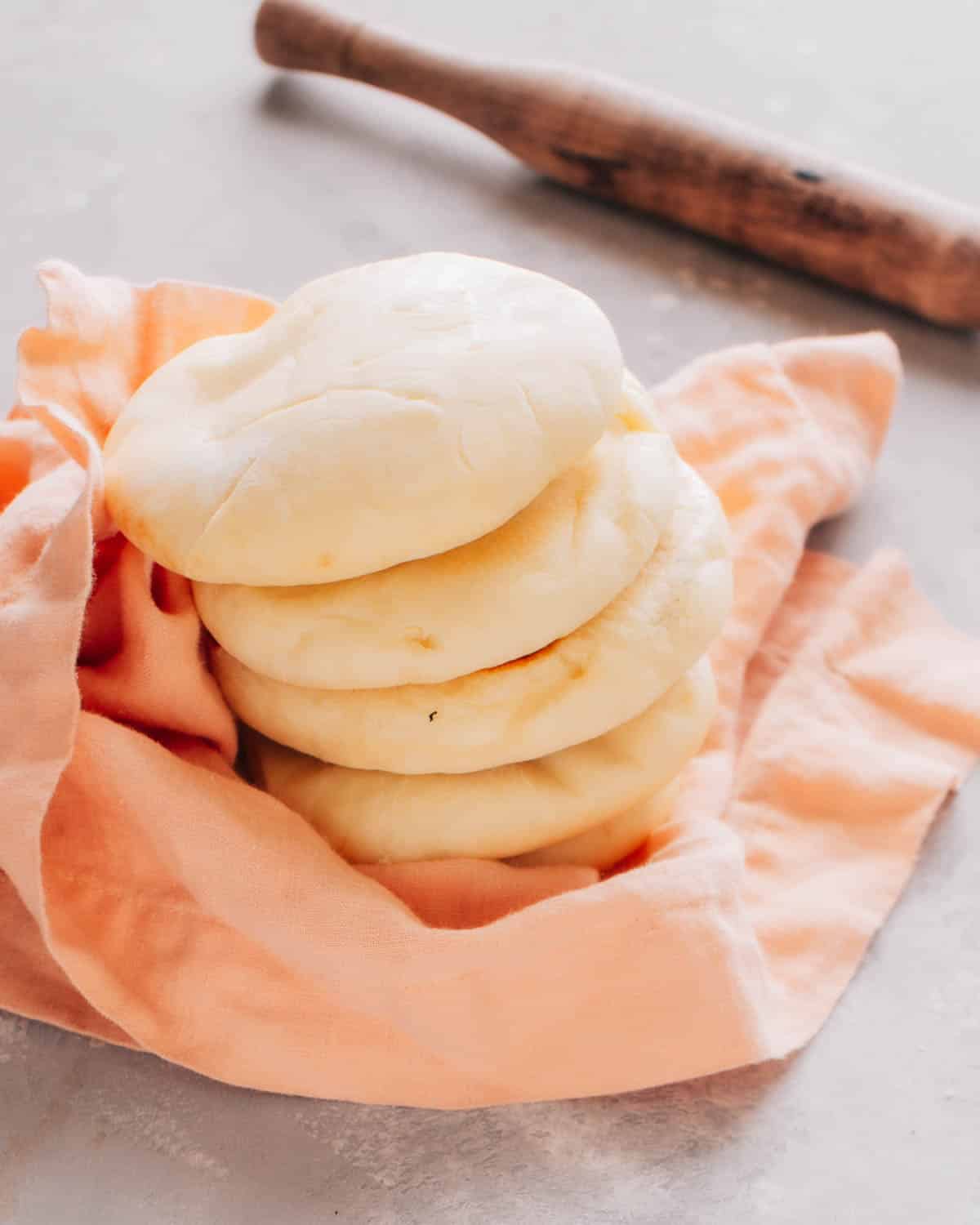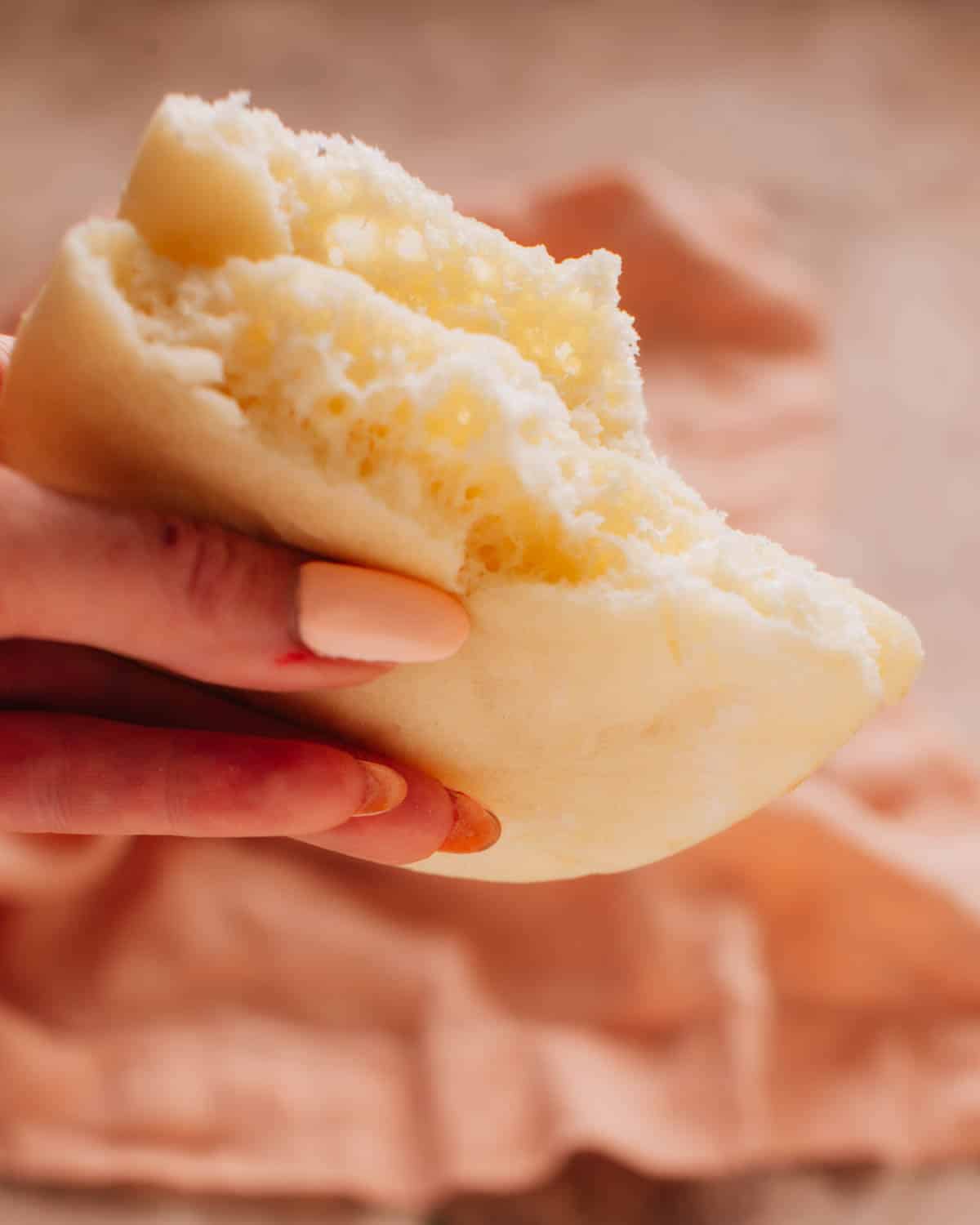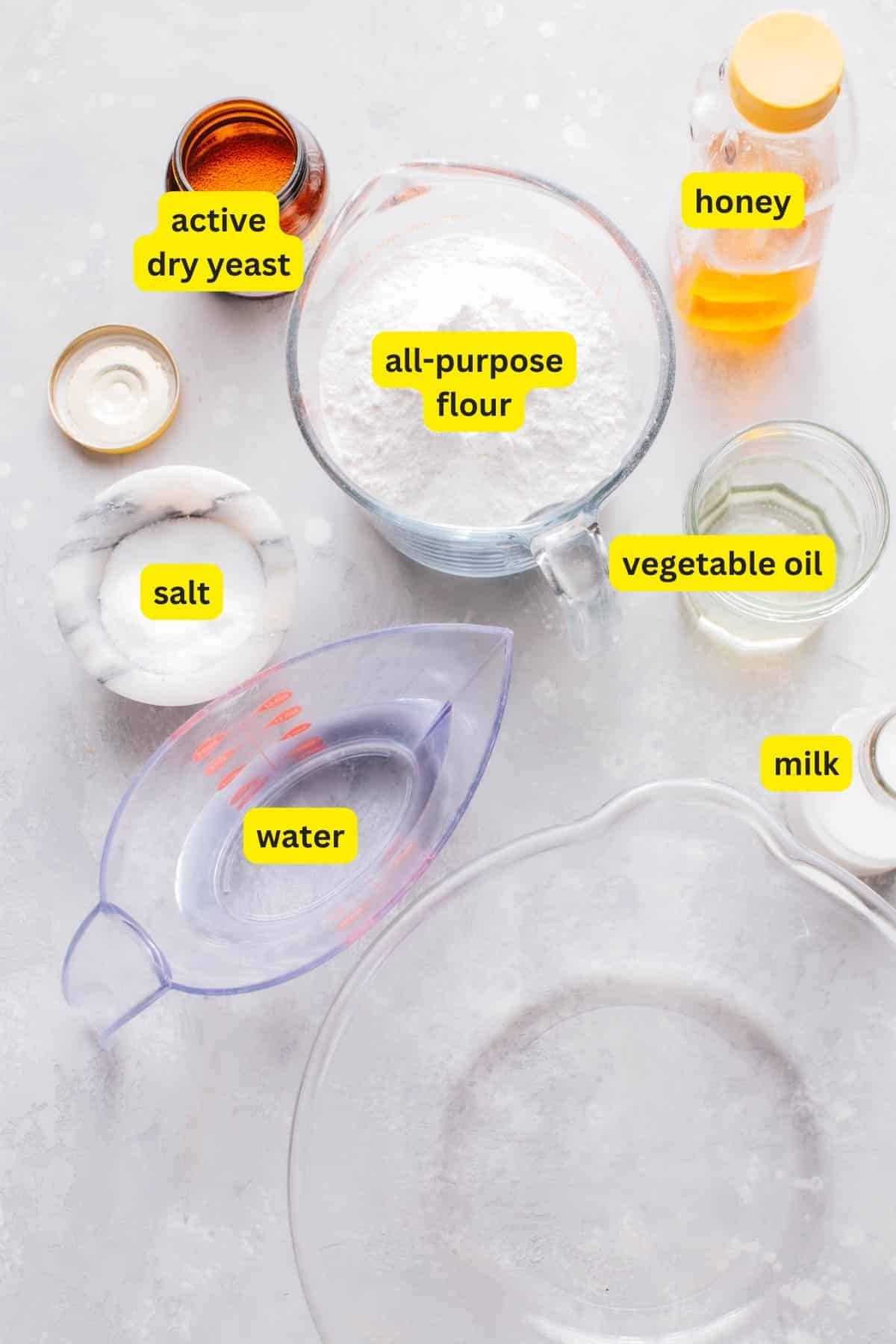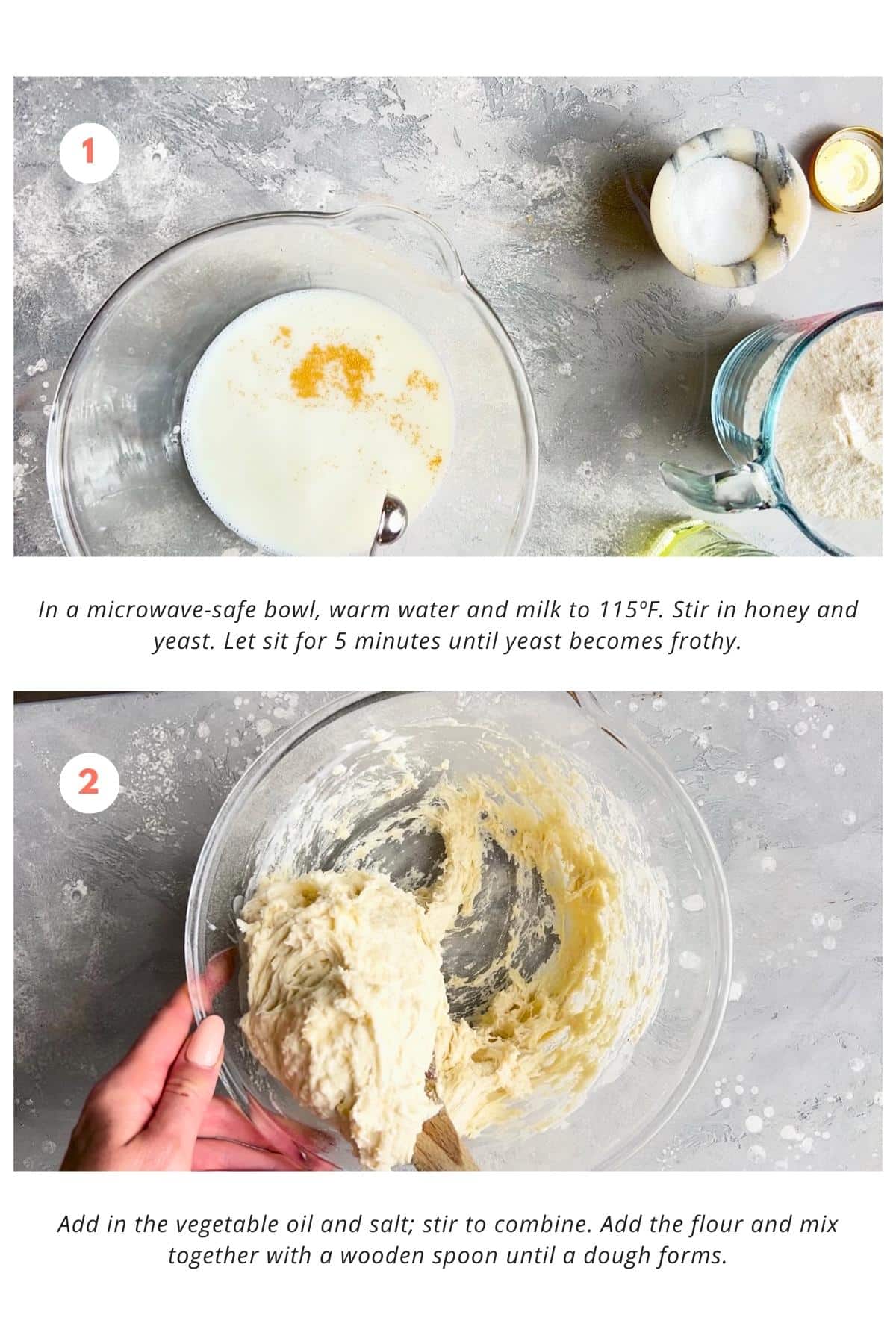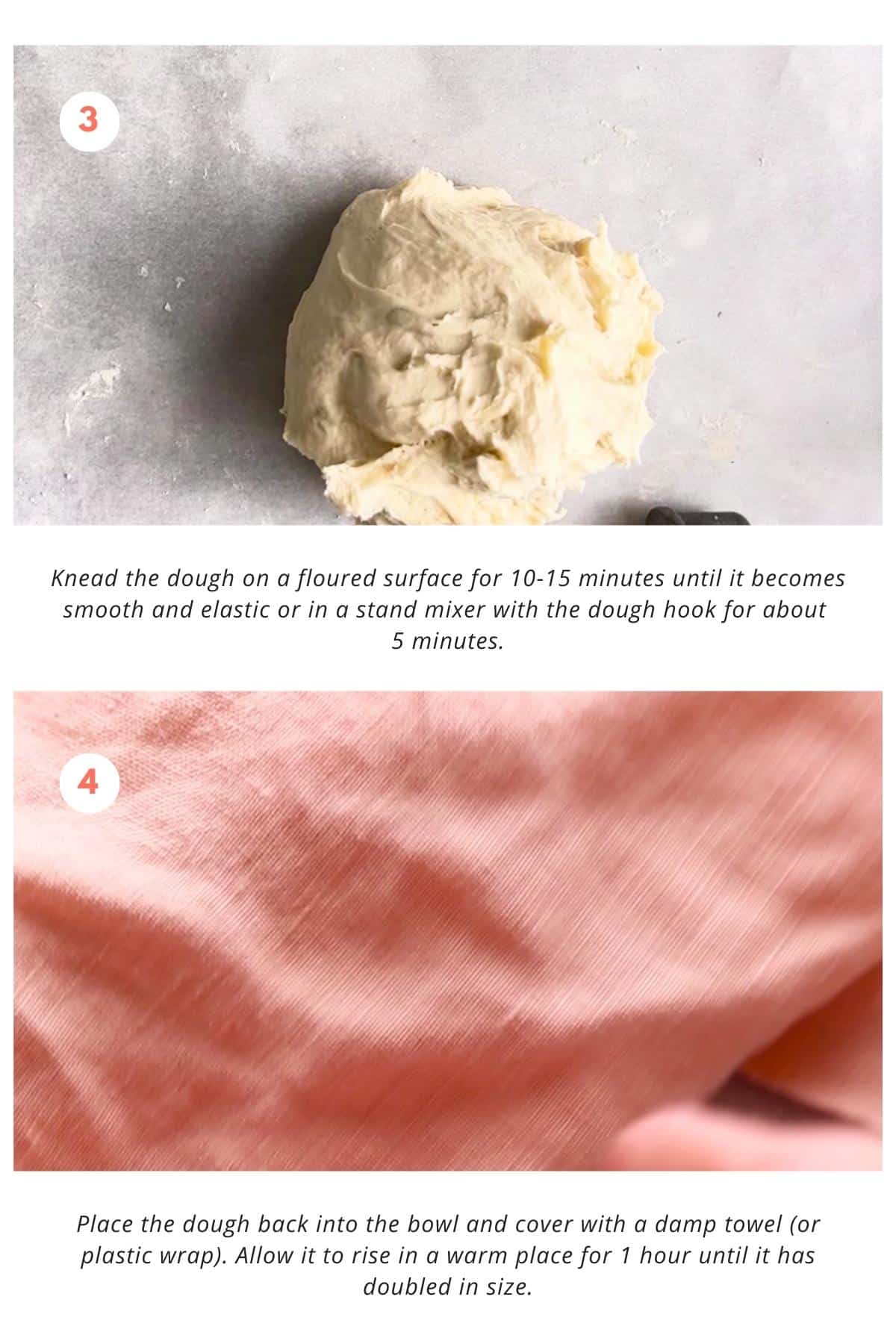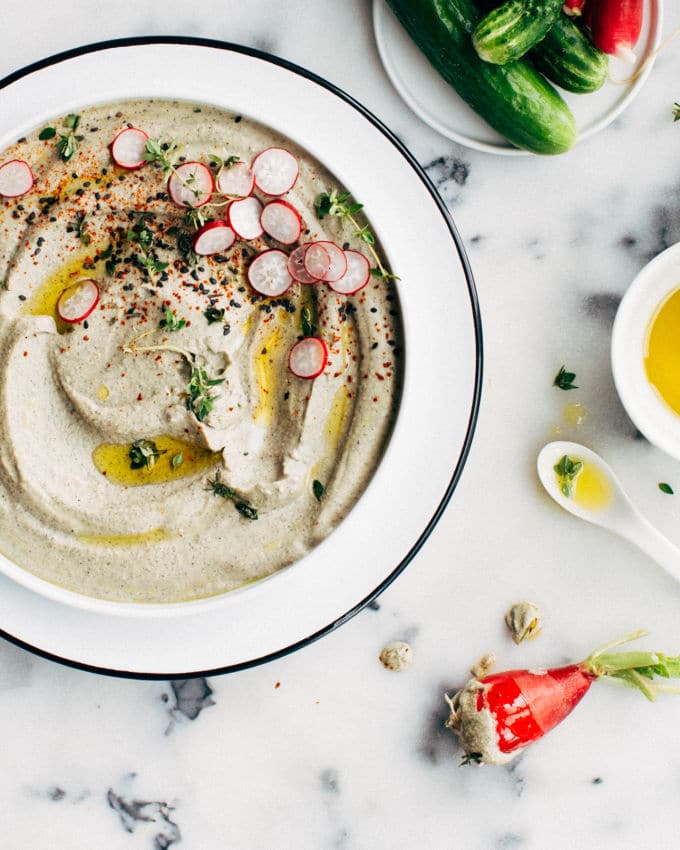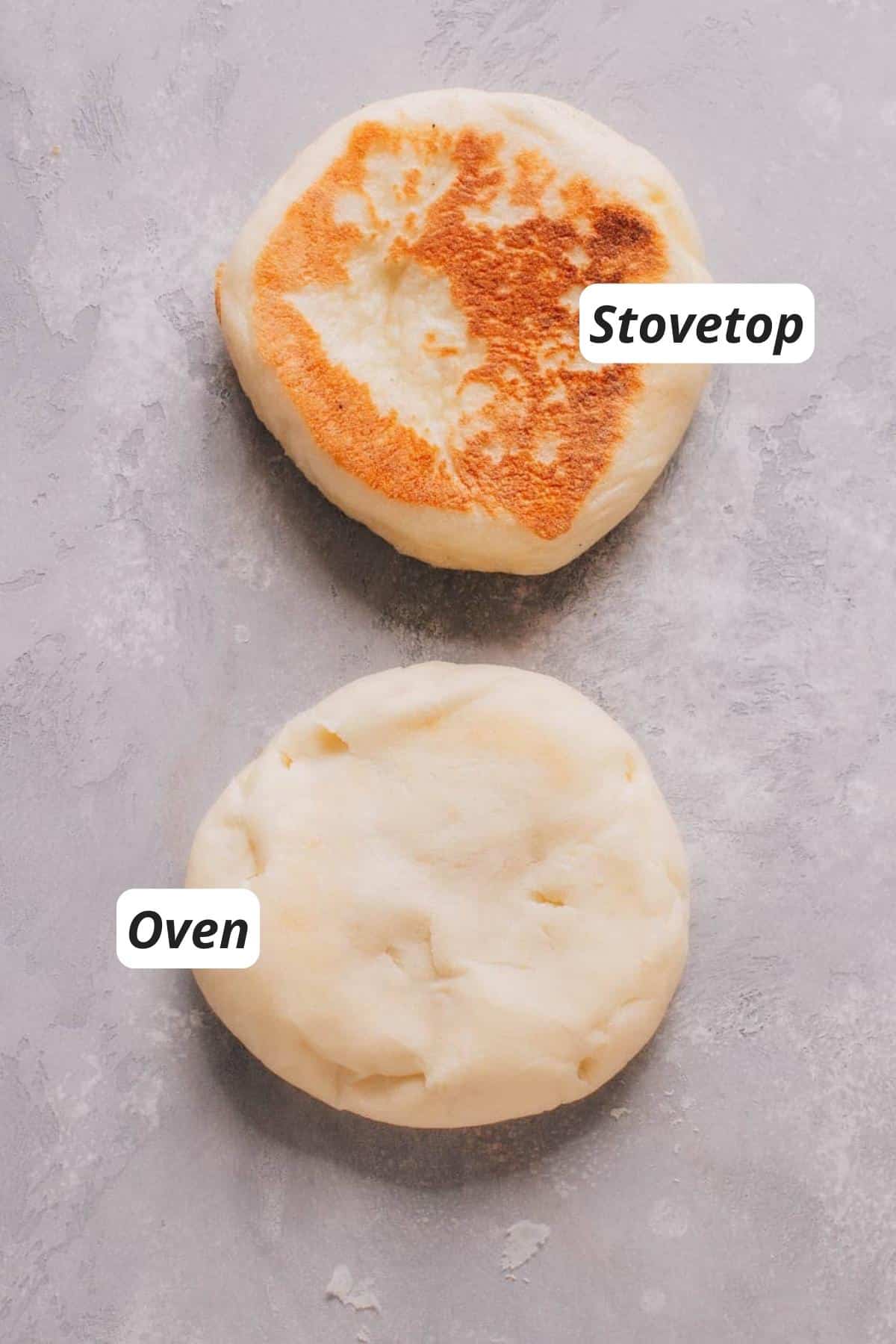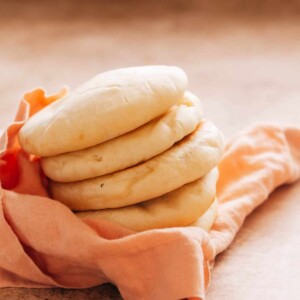Jul 16, 2023, Updated Sep 11, 2024
What are the Different Kinds of Turkish bread?
Turkey has so many incredible breads to offer, each with its own unique characteristics and flavor profile. Here are some of the most common Turkish bread types: Turkish flatbread recipes come in many shapes and sizes, and the texture and toppings can vary depending on the region of Turkey where the bread is made.
You’re Going to Love this Authentic Recipe
This authentic Turkish flatbread recipe is for a special bread called bazlama. It is sometimes compared to pita or naan, but it is thicker and fluffier than both and is absolutely delicious in its own right. I’d say it is most similar to Greek-style pita bread, which has no pocket. This particular recipe, however, produces softer bread with more moisture than any store-bought Greek pita I’ve had. The dough is divided into individual portions, which are then shaped into round, flat discs. It is typically cooked on a griddle or stovetop, but I found it gets fluffier and stays softer when oven baked. Bazlama bread is commonly enjoyed for breakfast or with meals, and it can be served plain or with various toppings, such as butter, cheese, honey, or jam. It can also be used as a base for sandwiches or to accompany dips, soups, and stews. This versatile Turkish bread is not only popular in Turkey but is also enjoyed in Middle Eastern cuisine and in the Balkans. This Turkish flatbread recipe has quickly become one of my favorite bread recipes. Here’s why:
Easy to Make: All it takes is a few simple ingredients and a little bit of time to create this amazing bread at home. Incredibly Versatile: It pairs with almost anything – hummus, soups, stews, salads, you name it! Amazing texture: I keep repeating, and I won’t stop: it’s JUST SO FLUFFY.
A Simple Turkish Bread Recipe: Gather Your Ingredients
First thing first, let’s round up the ingredients for this fabulous recipe for Turkish flatbread. It is so simple to make and uses basic ingredients:
All-purpose flour: Our main squeeze and the backbone of our bread. It provides structure, forming the gluten networks that give our Turkish bread its unique texture. Water: This humble component does more than you’d expect. It hydrates the flour, helping to start the gluten-development process, and assists in the activation of the yeast. No water, no rise, my friends. Milk: Our secret sauce to richness and a beautifully tender crumb. Its natural sugars also help to boost our bread’s color, making it oh-so-appealing. Honey: Honey, let me tell you, this isn’t just for sweetness. It helps to feed the yeast, enhancing the rise and imparting a subtle hint of natural sweetness to our bread. Active dry yeast: This is our bread’s powerlifter, helping it rise to the occasion. Vegetable oil: Slipping in a bit of moisture and fat, it helps to keep our bread soft and tender for longer. This is the secret behind every bite that says ‘Made with Love’. Salt: The unsung hero, it strengthens the gluten structure and brings out all the other flavors.
So there you have it. Your kitchen is about to smell like a cozy Turkish bakery.
Grab these Tools
Before we get baking, let’s get our toolkit in order. Don’t worry, there’s nothing too fancy here.
Large Microwave-Safe Bowl: To warm your liquids and let the yeast bloom. Wooden Spoon: Perfect for mixing your ingredients without overworking the dough. Baking Sheet with Parchment Paper: Ensures that your bread doesn’t stick and provides an easy cleanup. Stand Mixer with a Dough Hook (Optional): If you’ve got one, it’ll save you the elbow grease when kneading the dough.
How to Make This Easy Turkish Bread Recipe: Step-by-Step Directions
Get ready to roll up your sleeves and embark on this culinary adventure to make this recipe for Turkish bread. Here’s the rundown on how to become your neighborhood’s favorite amateur baker.
Warm water and milk: The heated liquids wake up the yeast and give it a comfy environment to get to work. Stir in honey and yeast: The honey serves as a tasty treat for the yeast, encouraging it to bloom and start the fermentation process, which is vital for the bread to rise. Add oil and salt: These two sneak in flavor and tenderness into the dough, ensuring each bite is as enjoyable as the last.
Incorporate flour: The flour kicks off the gluten formation, which will give our bread its signature soft yet chewy texture. Knead the dough: This is your workout for the day. Dump the dough onto a clean, floured work surface and start folding it over on itself and pushing it away. Kneading helps to strengthen the gluten networks, making the dough elastic and ready to rise. Let it rise: This is where we practice our patience. The dough needs this time to ferment and create gases that will puff up our bread.
Preheat the oven: A hot oven ensures a fast rise and helps to create those lovely pockets of air inside the bread. Shape and bake: Roll your dough and shape it before sending it into the oven. The heat makes the water in the dough turn into steam, causing the dough to puff up and create that delicious, airy texture. Cool and serve: Give your bread a few moments to cool down after its hot adventure. This makes it easier to handle and allows the structure to settle before you dive in.
That’s all there is to it! It might take a little practice, but soon you’ll be making Turkish bread like a pro.
How to Eat Your Homemade Turkish Bread
How should you serve these beautifully puffy rounds of perfection? Allow me to inspire your taste buds.
Dip Transporter: Use it to scoop up dollops of hummus, spinach dip, or Cucumber Raita (Indian yogurt sauce). Kebab Wrap: Fill it with sizzling grilled meats (like Lamb Kofta, Harissa Lamb Chops, or Indian Lamb Chops), or go vegetarian with Indian Chickpea Salad or Buffalo Chickpeas. You’ll want to pair all your favorite kebab recipes with Turkish bread, too. Breakfast: Lightly toast it, slather on some honey or your favorite jam, and serve it with a side of fresh fruits. Morning, meet your new favorite breakfast. Soup’s Best Friend: Serve it with your go-to soup and stew recipes and soak up all those delicious drops from the depths of your bowl. I recommend this incredible homemade tomato soup recipe, my favorite Ground Turkey Soup, or this tender and delicious Beef Vegetable Soup.
Make Ahead and Storage Tips
For those looking to prep ahead or save leftovers, here are some practical tips for your Turkish bread.
Prepare Dough in Advance: Assemble the dough a day before and let it rise in your fridge overnight. Let it come to room temperature before rolling it out. This ensures you have the dough ready to bake fresh bread whenever you need it. Freezing Option: Fully baked and cooled Turkish bread can be stored in the freezer. It’ll retain its quality for up to 3 months and be ready to serve with just a quick reheating. Room Temperature Storage: Keep your bread fresh at room temperature by sealing it in a zip-top bag. It will stay good for up to a few days. Refresh Stale Bread: If your bread has lost its freshness, lightly dampen it and pop it in the oven. The heat will restore its original soft texture. Transform into Breadcrumbs: Bread past its prime? Don’t toss it out. Instead, convert it into breadcrumbs for use in other recipes. Your food waste footprint — and your next breaded dish — will thank you.
Variations and Substitutions
Discover the endless possibilities of Bazlama with these mouthwatering variations and substitutions that will elevate your flatbread experience:
Add Herbs: Infuse your Bazlama with aromatic flavors by incorporating finely chopped fresh herbs like parsley, dill, or cilantro into the dough. Spice it Up: Give your Bazlama a kick by adding spices such as cumin, paprika, or za’atar to the dough, creating a unique flavor profile that complements your favorite dips and spreads. Cheesy Delight: Transform your Bazlama into a scrumptious treat by stuffing it with cheese like feta, mozzarella, or halloumi before cooking, resulting in a gooey, irresistible center. Go Gluten-Free: Make your Bazlama accessible to everyone by using gluten-free flour blends or alternative flours like chickpea or almond flour, ensuring that even those with dietary restrictions can indulge. Sweet Tooth Satisfaction: Turn your Bazlama into a delectable dessert by adding sweet ingredients like cinnamon, nutmeg, or even cocoa powder to the dough, and serve it with honey, fruit preserves, or Nutella for a delightful finish. Seedy Goodness: Boost the nutritional value and texture of your Bazlama by mixing in seeds like sesame, sunflower, or pumpkin seeds, creating a delightful crunch with every bite. Flour Variations: You can substitute half the all-purpose flour with whole wheat flour for a higher-fiber version. Dairy-Free: Make a plant-based vegan turkish bread by swapping out the milk with a non-dairy alternative like almond or soy milk.
The Secret to Fluffy Turkish Bread? Expert Tips and Tricks:
The secret to achieving perfect pouf lies in a few key factors. Here are some tips to help you make Turkish flat bread that puffs up nicely: By following these tips, you will be able to totally nail this soft and fluffy Turkish flat bread recipe.
Other Delicious Bread Recipes You’ll Love
Paratha (flaky and layered restaurant favorite) Roti (Amma’s recipe for super soft staple Indian flatbread) Aloo naan (the viral naan recipe stuffed with a spicy potato mixture) Keema naan (naan filled with spiced meat) Fresh Flour Tortillas (an easy recipe to make delicious flour tortillas from scratch) Oatmeal Brown Bread: Wholesome goodness of rolled oats and a touch of molasses for a delightful nutty flavor. Chapathi: A staple Indian flatbread that is soft, versatile, and incredibly easy to make. It resembles a whole wheat wrap or tortilla. Butter Naan: This homemade naan recipe was perfected over the years to achieve a soft and stretchy texture that rivals your favorite Indian restaurant! Homemade Pizza Dough: This recipe gives a thin and crispy crust that brings the essence of wood-fired oven pizza right to your home.
